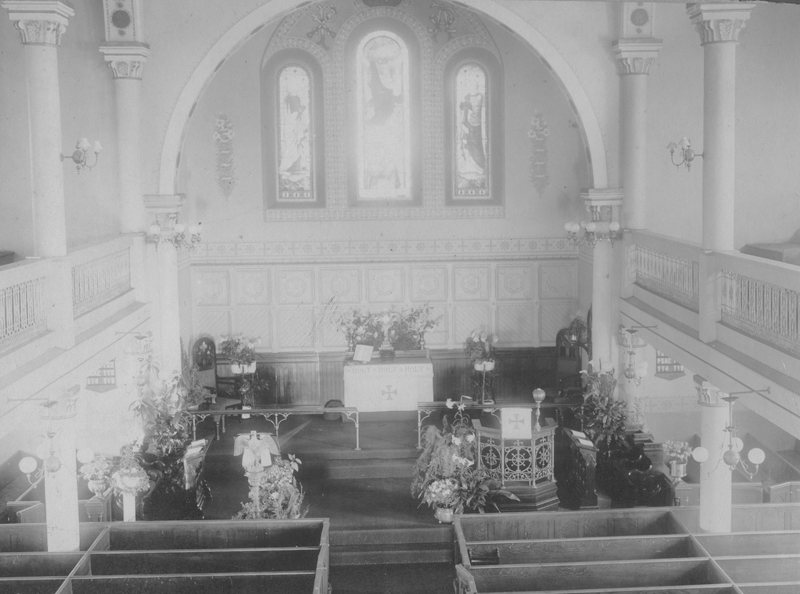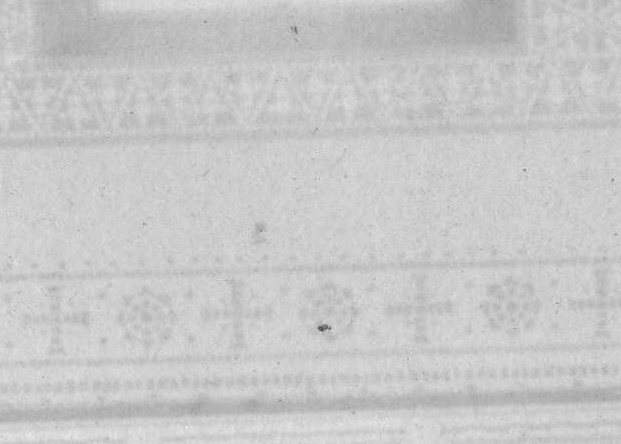Symbolism is an important part of worship and increasing the symbols of worship were being lost in this crowded condition of the church.
One byproduct of openness was to revive an excitement or the vibrancy of worship. By the 1950’s , St. George’s was a stark place. From 1925 to the 1950’s the color of the church was eliminated to create a drab white. The gold gilt acanthus leaves on the columns had been painted out. While the chancel was definitely separate, much of everything else blended together.
The addition of decorative paint late in the cycle of the renovation planning (2008-2011) reversed this pattern. The work was done by Thomas Moore Studio in Baltimore and was one of the last items added to the project. You can read the specs of the work here. The thought became that the base colors of a church should be balanced with brighter colors to create interest and excitement. Paint should also show off the unique architectural features such as the columns and capital.
In our renovation there was the revival of decorative paint. It was not new to St. George’s. In 1894 the decorative paint was called “frescoing” and in that time they lamented that a “good deal of the frescoing was pealing of.”
A picture of the decorative paint in a 1906 picture played a significant role in the Nave Renovation plans shown below

The 1906 renovation goal as stated by Rev. McBryde was “putting the Church in order and the beautifying the Church.” Much of it involved painting both the inside and outside, in particular to freshen the decorative paint – to make it “lighter.” Our renovation carried over that feel both in the chancel and in the paint.
Symbolism in 1906 was built into the paint. Alpha, Omega emblems were above windows. There was a decorative Frieze around whole chancel. The goal in our time was not to duplicate the individual symbols but simply the role of decorative paint in worship.
However, to remember the 1906 church, we actually took one of the symbols of that time between the reredos and the center window which is now in our narthex.


The revival of the decorative paint produced what many called the “wow” factor.
Here is how the Virginia Star Oct. 31, 1906 described the renovation:
“It would be difficult for any one not an artist to describe the improvements that have recently been completed in St. George’s Episcopal church.
“ The entire vestibule has been tiled with grey and brown tiles, and its walls have
been tinted a very deep cream color, white the ceiling has been finished in
small rolled iron squares.
“The body of the church has been frescoed throughout. The wainscoting is a Nile green, the walls the yellow green now the favorite color of some of the principal church decorators in the country. The calling has been smoothed into broad panels by the campo board and tinted in delicate green with gold borders. The divisions between wainscoting and walls are marked by dotted bands of old rose, and the overhead, sides, above the gallery and under the cornices with a deep border of intricate cross design.
The arches are centered with medalions in which the symbols of the name of our Lord are wrought in gold.”
